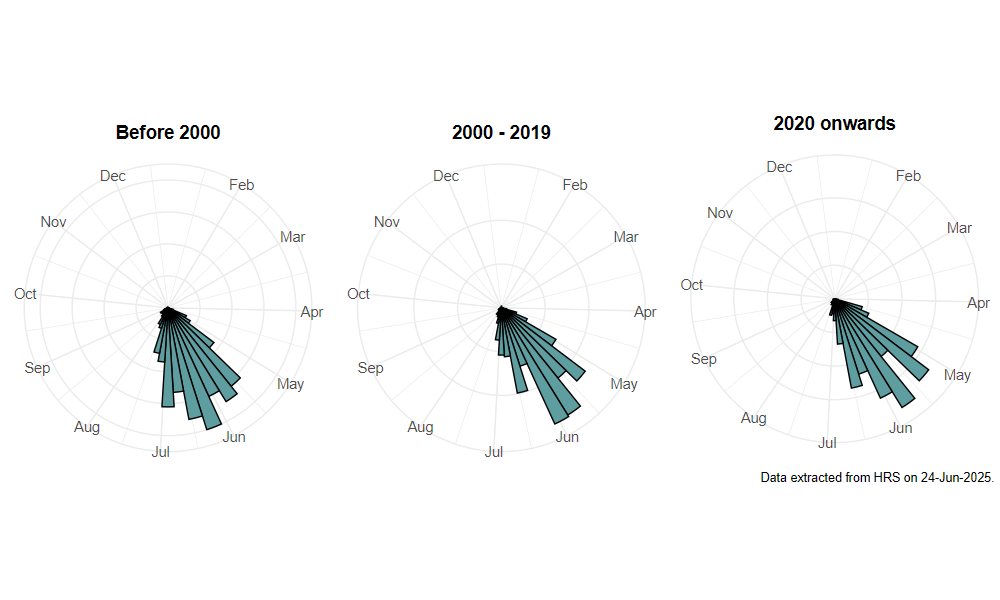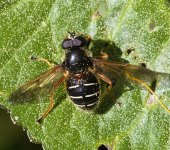Sericomyia lappona (Linnaeus, 1758)
Identification
Identification difficulty = 2. ![]()
![]() according to Ball & Morris, 20241
according to Ball & Morris, 20241
Biology
The larva is of the 'long-tailed', aquatic type, and is associated with peaty pools and boggy stream-sides in moorland and with wet woodland, such as Salix carr. Adults are usually seen visiting flowers, or basking on sun-lit foliage, rocks, etc., near larval habitat. In southern England, this species is associated with sandy, acid heathland, not always in wet areas. It tends to occur earlier in the year than S. silentis, although they are not infrequently seen together.
Flight period
The following plots show the number of unique records per week excluding those reported to be of immature stages.

Distribution
Very similar in distribution to S. silentis (the two species often occur together), but less abundant and more strictly confined to bogs, especially in southern Britain.

Trends
The following plots show the Frescalo TFactor vs year and a map of the rescaled frequency (all records) for the species.
-
Ball, S., & Morris, R. (2024). Hoverflies of Britain and Ireland. WILDGuides (3rd ed.). Oxford: Princeton University Press. ↩
